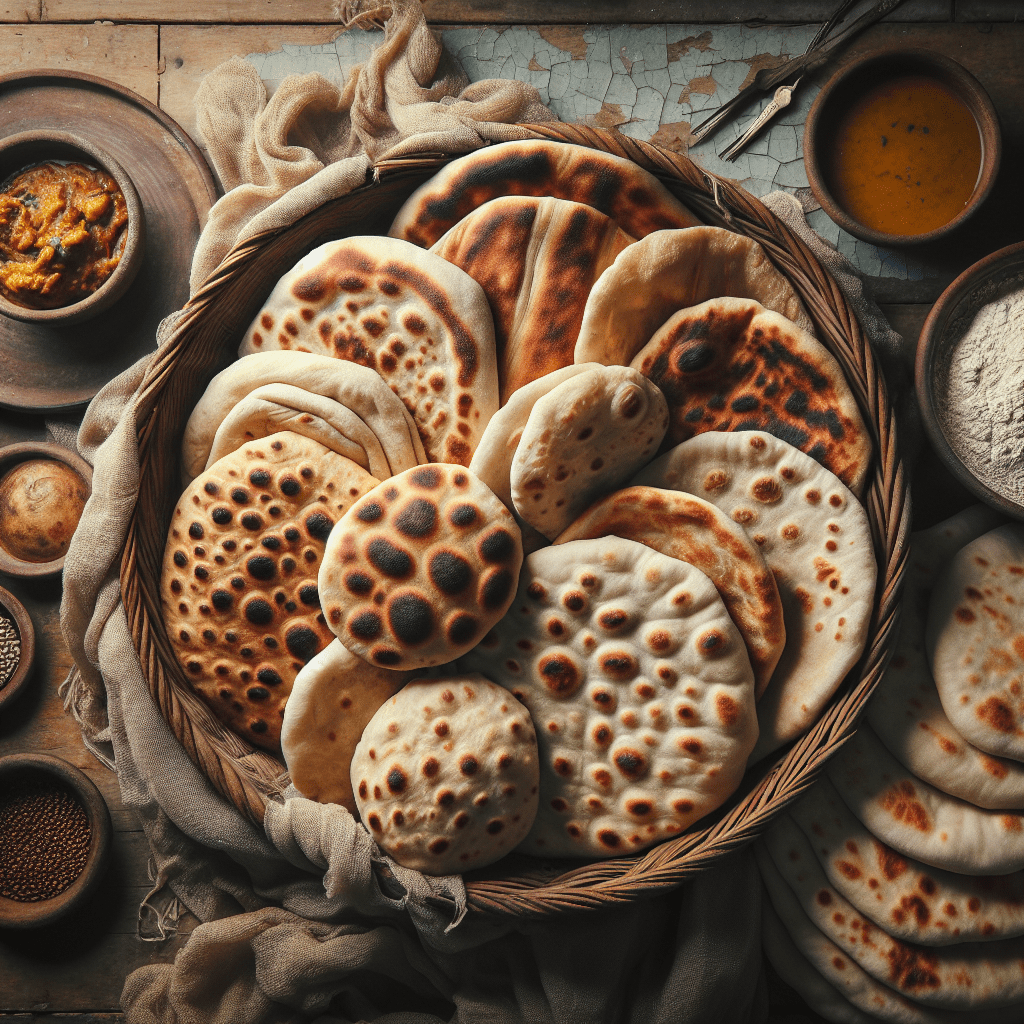Indian cuisine is renowned for its diverse flavors and aromatic spices. Bread holds a significant place in Indian cuisine, serving as a staple food for millions of people. In this blog post, we will explore the world of Indian hot breads, their history, types, techniques, popular accompaniments, street food culture, health benefits, and more.
History and Origins of Indian Hot Breads
The evolution of Indian hot breads is influenced by the various regions and cultures that have shaped the country’s culinary traditions. Over time, different cooking methods and ingredients have been incorporated, resulting in a rich and diverse bread culture.
Types of Indian Hot Breads
Chapati (Roti)
Chapati, also known as Roti, is a staple bread in Indian households. Made with whole wheat flour, water, and salt, chapati is rolled out and cooked on a griddle or tawa. It has regional variations and names, such as phulka and jowar roti, and is commonly served with various curries and accompaniments.
Naan
Naan is a popular Indian bread made with all-purpose flour, yogurt, yeast, and ghee. It is traditionally cooked in a tandoor, giving it a soft and slightly charred texture. Variations like butter naan and garlic naan are widely enjoyed. Naan has regional specialties and is often paired with rich gravies and curries.
Paratha
Paratha is a layered and flaky bread prepared with whole wheat flour, oil, and water. It can be stuffed with various fillings like potatoes (aloo paratha), cauliflower (gobi paratha), or paneer (paneer paratha). Parathas hold cultural significance and are commonly enjoyed for breakfast or as a main course.
Puri
Puri is a deep-fried bread made with wheat flour, salt, and water. It puffs up when cooked, resulting in a light and crisp texture. Bhatura and luchi are popular variations of puri. Puri is often served during festivals and special occasions.
Kulcha
Kulcha is a leavened bread made with all-purpose flour, yogurt, baking powder, and baking soda. It is typically cooked in a tandoor or oven and is known for its soft and fluffy texture. Kulcha is often paired with chole (chickpea curry) and other curries.
Appam
Appam is a specialty of South Indian cuisine. It is made from fermented rice batter and coconut milk, resulting in a lacy and crispy-edged bread. Appam is enjoyed with various curries and chutneys.
Techniques and Tips for Making Indian Hot Breads
To achieve the perfect texture and flavor, certain techniques and tips should be followed. Kneading and resting the dough are essential steps for creating soft and pliable breads. Traditional cooking methods like tandoor, tawa, and oven play a crucial role in achieving the desired results. It is important to avoid common mistakes and follow specific guidelines for each type of bread.
Popular Accompaniments for Indian Hot Breads
Indian hot breads are often enjoyed with a variety of accompaniments. Chutneys and pickles add a burst of flavors, while dals (lentil curries) provide protein-rich and comforting sides. Vegetable curries and gravies enhance the overall meal experience, and yogurt-based side dishes offer a cooling contrast.
Indian Hot Breads in Street Food Culture
Indian street food culture is incomplete without the presence of hot breads. Street vendors specialize in various types of breads, offering unique and delicious combinations. Popular street food items involving hot breads include kathi rolls, pav bhaji, and vada pav. Street food festivals and events celebrate these culinary delights.
Health Benefits of Indian Hot Breads
Indian hot breads, especially those made with whole wheat flour, offer nutritional value. They are a good source of fiber, vitamins, and minerals. Fermented breads like naan and appam aid in digestion, while the addition of spices and herbs provides health benefits.
Conclusion
The world of Indian hot breads is vast and diverse, reflecting the country’s culinary heritage. From simple chapatis to flavorful kulchas, each bread has its own unique characteristics and cultural significance. By exploring and trying different types of Indian hot breads, one can truly appreciate the richness and depth of Indian cuisine.

